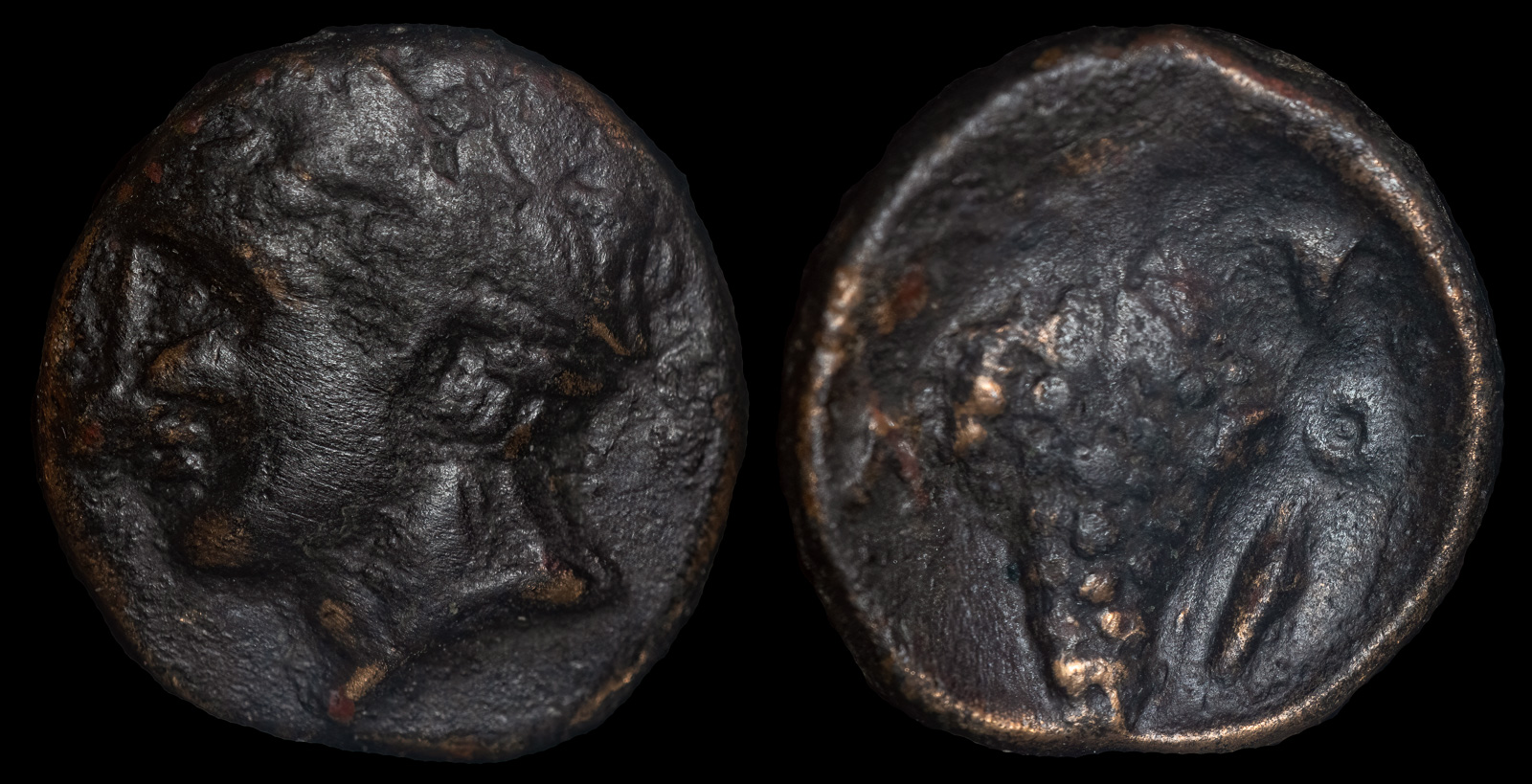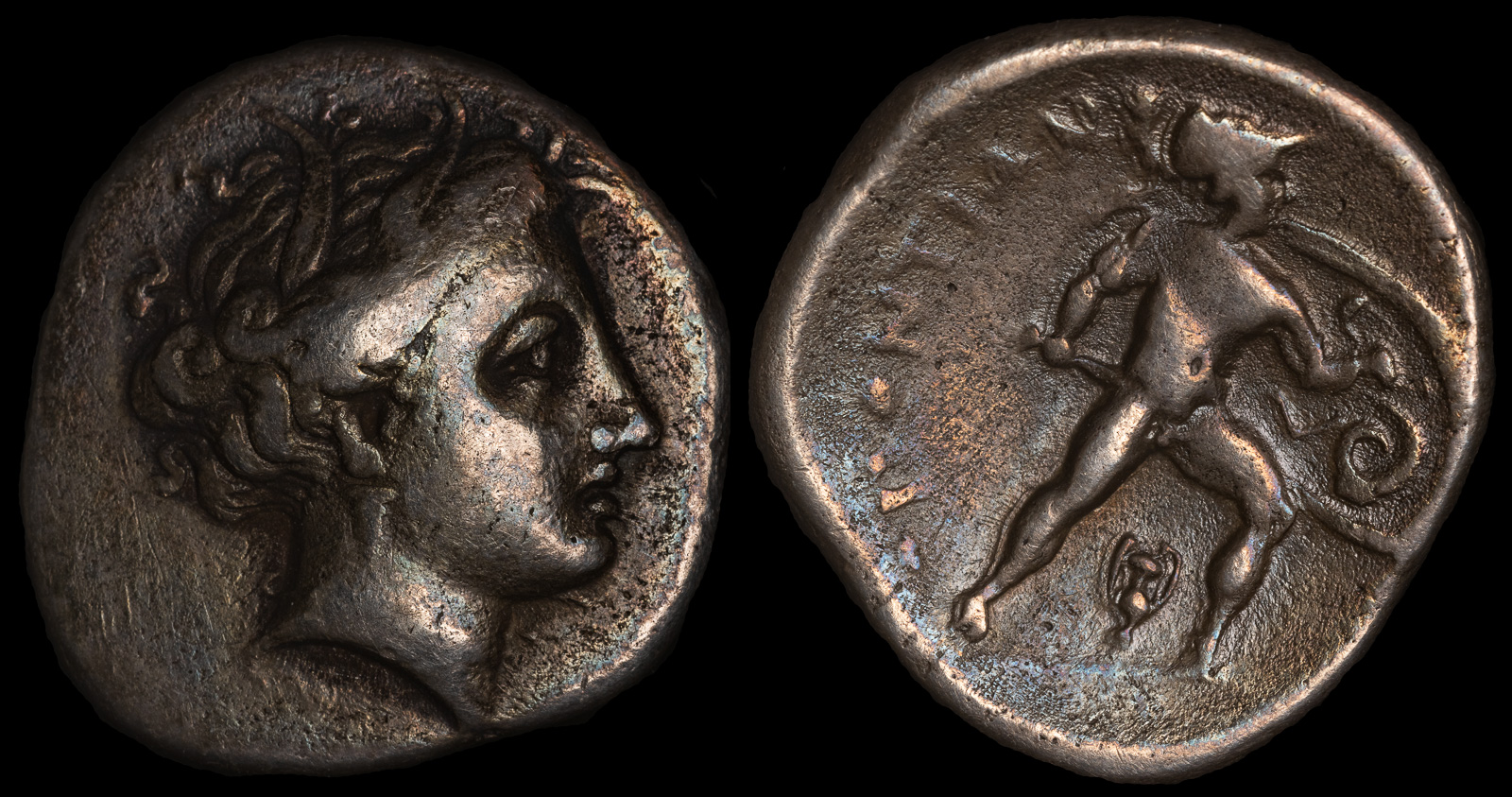
3rd or last quarter 4th Century BCE
AE 12mm 1.5g
Ox: Head of Apollo left
Rx: Grape bunch hanging from stalk; L to left, O to right, cnemis as symbol below right
Ex BargainBinAncients
During ancient times, there were either two or three Lokri. First, it was divided between east and west. The west was called Ozolian Lokris and seem to have been more barbarous than the east. This part minted few coins, and none of them until the 2nd century BCE.
Eastern Lokris was divided into two parts – Lokris Epiknemidia and Lokris Opuntii. Both contained well-defined cities, but they often referred to the same area and were lumped together by many historians. Those of Lokris Opuntii, such as this one, are more common.

ca. 325 – 300 BCE
Ae 12.5mm, 2.4gms
Obv: Helmeted head of Athena right, ?AM (magistrate’s name) above
Rev: Grape cluster on vine; ?OKP?N around below
Ref: BCD Lokris-Phokis 112.1, BMC 67
During the times of Homer, the Opuntians were led by Ajax, who appears on most of their silver coinage. Lorkis Epiknemidia itself is located close to Thermopylae, the site of the tremendous battle between the Spartans and their allies and the Persians. The Lokrians fought on the Spartan side in that battle.

369 – 338 BCE
AR Hemidrachm 16mm 2,56g
Wreathed head of Persephone right, wearing single-drop earring /
OΠΟΝΤΙΩΝ; Ajax advancing right, nude but for crested helmet, brandishing dagger and shield with serpent device; kantharos between his legs.
SNG Cop 50
The coinage between the two cities is similar, both with grape designs, which indicates they must have collaborated. Presumably, this bronze coin was meant for local use in Lokris Opuntii.
This coin was supposedly minted during the time of Philip II and is incredibly rare and unpublished. I am still seeking more information about its attribution.

Time of Philip II 351 – 338 BCE
AE 18mm 5,28g
OBV: Head of Athena r., wearing crested Corinthian helmet.
REV: ΟΠΟΝ ΤΙΩΝ Bunch of grapes with tendrils, hanging from stalk, a vine leaf on each side.
Unpublished